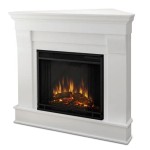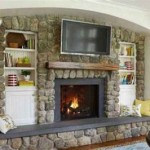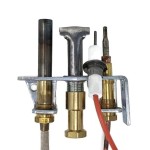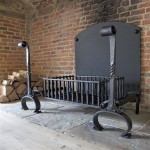Fireplace Hearth and Home: A Comprehensive Guide
The fireplace, a focal point in many homes, offers warmth, ambiance, and a sense of comfort. However, understanding the nuances of fireplace functionality, safety, and design is crucial for ensuring a positive and lasting experience. This article delves into key aspects of fireplaces, encompassing their various types, fuel options, maintenance requirements, and integration into the overall home environment.
Types of Fireplaces: A Comparative Overview
Fireplaces are available in a range of designs and functionalities, each suited to different needs and preferences. Understanding these differences is essential for selecting the optimal fireplace for a given home.
Traditional wood-burning fireplaces remain a popular choice for their classic aesthetic and the authentic experience of burning real wood. These fireplaces typically feature a firebox constructed of brick or stone, a chimney for venting smoke, and a damper to control airflow. Wood-burning fireplaces require a regular supply of seasoned wood and careful maintenance to prevent creosote buildup, a flammable substance that can lead to chimney fires. They also contribute to air pollution, a factor to consider when making a purchasing decision.
Gas fireplaces offer a convenient and cleaner alternative to wood-burning models. Fueled by natural gas or propane, these fireplaces can be ignited with the flip of a switch or the press of a button. They produce less soot and creosote than wood-burning fireplaces, reducing the need for frequent chimney cleaning. Gas fireplaces are available in a variety of styles, including direct-vent models that vent exhaust gases directly to the outside and vent-free models that do not require a chimney or flue. Vent-free models, however, require careful consideration regarding ventilation and carbon monoxide safety.
Electric fireplaces provide a simple and versatile heating option, requiring only an electrical outlet for operation. These fireplaces use electric coils or infrared technology to generate heat and often feature realistic flame effects. Electric fireplaces are highly portable and can be easily installed in almost any room. They do not produce any emissions and are a safe option for homes with children or pets. However, electric fireplaces may not provide the same level of heat as wood-burning or gas models, and their reliance on electricity can be a drawback during power outages.
Fuel Options and Their Implications
The choice of fuel significantly impacts the performance, maintenance, and environmental impact of a fireplace. Each fuel type has its own set of advantages and disadvantages that must be carefully weighed.
Wood, the traditional fireplace fuel, offers a natural and renewable energy source. However, the quality of the wood is crucial for efficient and safe burning. Seasoned wood, which has been dried for at least six months, burns cleaner and produces more heat than green wood. Wood-burning fireplaces require regular cleaning to remove ash and creosote. Furthermore, wood smoke contributes to air pollution, particularly particulate matter, which can have adverse health effects.
Natural gas and propane are cleaner-burning fuels than wood, producing less soot and particulate matter. Gas fireplaces are readily available and offer consistent heat output. Natural gas is typically piped directly into the home, while propane is stored in tanks. Gas fireplaces require professional installation and maintenance to ensure safe operation and prevent gas leaks. The cost of natural gas and propane can fluctuate depending on market conditions.
Ethanol fireplaces utilize liquid ethanol, a renewable biofuel derived from plant sources. These fireplaces are ventless, making them easy to install and suitable for homes without chimneys. Ethanol burns cleanly, producing minimal smoke and ash. However, ethanol fireplaces may not generate as much heat as wood-burning or gas models, and the cost of ethanol can be relatively high.
Maintenance and Safety Considerations
Proper maintenance is essential for the safe and efficient operation of any fireplace. Neglecting routine maintenance can lead to hazardous conditions, such as chimney fires or carbon monoxide poisoning.
Chimney sweeping is a crucial maintenance task for wood-burning fireplaces. Creosote, a flammable byproduct of wood combustion, accumulates in the chimney over time. Regular chimney sweeping removes creosote buildup, reducing the risk of chimney fires. It is recommended to have the chimney inspected and swept at least once a year, or more frequently if the fireplace is used regularly. Hiring a certified chimney sweep is advisable to ensure thorough and safe cleaning.
Gas fireplaces require regular inspection and cleaning to ensure proper functioning and prevent gas leaks. A qualified technician should inspect the gas lines, burner, and venting system annually. Burner tubes can become clogged with dust and debris, affecting the flame pattern and heat output. The technician can clean the burner and ensure that all components are operating correctly. Carbon monoxide detectors should be installed near gas fireplaces to provide an early warning of potential leaks.
Regardless of the fireplace type, it is imperative to maintain a safe distance between flammable materials and the firebox. Curtains, furniture, and rugs should be kept at least three feet away from the fireplace opening. A fireplace screen or door helps to prevent sparks and embers from escaping the firebox. Never leave a fire unattended, and ensure that the fire is completely extinguished before leaving the house or going to bed.
Integrating a fireplace into the home environment involves considering its aesthetic appeal, functionality, and impact on the overall comfort and energy efficiency of the space. The fireplace can serve as a central design element, complementing the architectural style and décor of the room. The selection of materials, such as brick, stone, or tile, can influence the visual impact of the fireplace.
Proper ventilation is crucial for ensuring good indoor air quality. Fireplaces can contribute to drafts and heat loss if not properly sealed. Consider installing energy-efficient fireplace doors or inserts to minimize heat loss and improve energy efficiency. A well-insulated chimney can also help to reduce drafts and improve the overall comfort of the home.

Fireplace Buy Fireplaces Fireside Hearth Home

Hearth Home Fireplaces Stoves Inserts Installation Service

Fireplace Buy Fireplaces Fireside Hearth Home
Fireplaces Glowing Hearth Home

Fireside Hearth Home Your Fireplace Experts

Dv3732 Or Dv4236 Direct Vent Fireplace By Hearth Home Technologies Hechler S Mainstreet Troy Missouri

Hearth Home B36s Horizon New Zealand

Fireplace Design Calgary Companies Hearth Home

Hearth Home Courtyard 36 Weiss Johnson Fireplaces

Fireside Hearth Home Your Fireplace Experts








